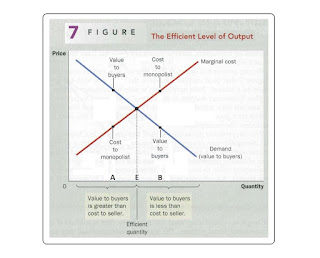
Free Trade Increases Total Surplus … First watch this video Imports, Exports, and Exchange Rates: https://www.youtube.com/watch?v=geoe-6NBy10 … The U.S.A. should unilaterally end all import restrictions. This might seem radical but this is a widely held and promoted stance among libertarians including those at the Cato Institute. Consumer surplus is the price a person is willing to pay in excess of what they actually pay. Producer surplus is the price a producer sells its product for in excess of the cost of production. Total surplus = consumer surplus + producer surplus = total economic gain. For an economy maximizing total surplus is the goal, and it doesn’t matter if consumer surplus or producer surplus is bigger. … In Figure 1: Before country “Hereland” opens up to allow imports, Product X is only supplied to consumers in Hereland by producers located in Hereland: · price of X is $10 · quantity supplied of X is 20 units · consumer surplus is a...







